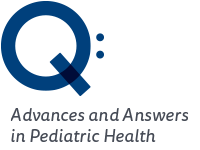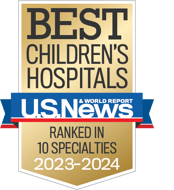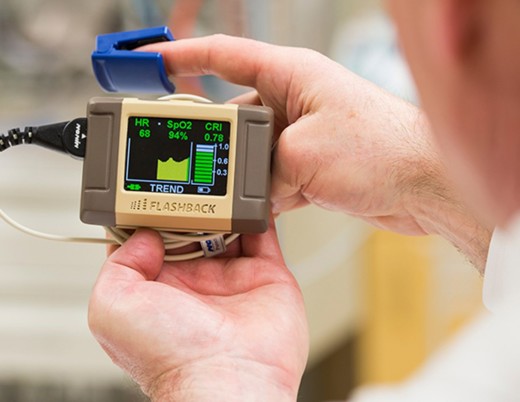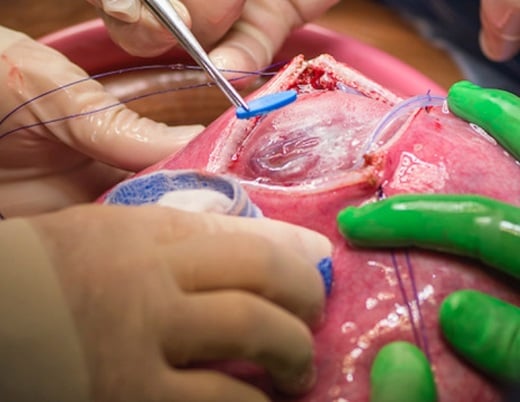Key takeaways
-
SIPAB+ and rSIG are two new pediatric trauma scoring tools.
-
Both include neurological status.
-
SIPAB+ was more specific and rSIG was more sensitive for identifying severely injured children requiring trauma team activation.
-
rSIG may be preferred tool; it balances sensitivity and specificity.
Background: predicting pediatric trauma outcomes with trauma scoring tools
In emergency settings, trauma scoring tools can help medical providers triage the most urgent cases based on clinical risk and anticipated need for resources and/or treatment. Established tools are effective for adult trauma patients but have not been proven useful for pinpointing the most severely injured children.
These tools don’t work well to assess pediatric trauma patients for several reasons:
- Age-related physiologic parameters are different
- Unique injury patterns
- Difficulty studying these tools in pediatric trauma populations due to relatively low rate of adverse outcomes
The medical community is very interested in including physiology-based scoring tools in pediatric trauma triage that can quickly and reliably identify severely injured patients.
- Non-pediatric trauma centers are often first to receive these patients
- Clinicians who are used to treating adults may have less familiarity identifying severely injured pediatric patients at risk for poor outcomes
- Trauma is the leading cause of death for children older than age 1
- Death is often due to:
- Traumatic brain injury (TBI)
- Hemorrhagic shock
- Death is often due to:
Pediatric scoring tools
Shock Index, Pediatric Age-Adjusted (SIPA)
Patient heart rate divided by systolic blood pressure (SBP)
- Existing tool backed by research
- Developed by researchers at Children’s Hospital Colorado
- Accurately identifies patients at risk for several adverse outcomes
- Does not account for neurologic status
SIPAB+
Elevated SIPA with Glasgow Coma Scale (GCS) ≤8
- New tool recently developed by team at Children’s Colorado
- Incorporates neurological status
- In one study, more accurately identified risk for blood transfusion, mortality when compared with elevated SIPA and no TBI (defined as SIPAB−)
rSIG
Reverse Shock Index (SI) multiplied by GCS
- New tool recently studied
- Incorporates neurological status
- Equal to Emergency Department arrival SBP divided by heart rate, multiplied by GCS
- Abnormal defined as higher than age specific cutoffs
- In one study, more predictive of mortality than SIPA
- In a later study, more predictive of need for early trauma interventions and placement of intracranial pressure monitoring device when compared with elevated SI and elevated SIPA

These new tools have not been compared with each other and their capacity to be incorporated into triage is not yet known. This study was conducted by Center for Children’s Surgery researchers at Children’s Hospital Colorado and the University of Colorado School of Medicine, including Shannon Acker, MD; Steven Moulton, MD; Denis Bensard, MD; Emily Cooper, MS. Children’s Colorado at Anschutz Medical Campus is a Level 1 Regional Pediatric Trauma Center.
The study aimed to compare SIPAB+ and rSIG and determine if one scoring tool would more accurately identify children requiring trauma team activation. Study authors also sought to determine if injury type affected the accuracy of either tool.
Methods: comparing two new pediatric trauma scoring tools that combine neurological status
The study analyzed deidentified data from the 2014-2018 Pediatric Trauma Quality Improvement Program (TQIP) database from patients 1-18 years old. Sensitivity, specificity, positive predictive value (PPV), and negative predictive value (NPV) were compared for each scoring tool for each outcome.
Exclusion criteria
Missing data at time of emergency department (ED) presentation:
- Heart rate
- SBP
- Total GCS
Data collection
- Demographics
- GCS
- Injury Severity Score (ISS)
- Initial vital signs at ED arrival
Primary outcomes
- Blood transfusion within 4 hours
- Intensive Care Unit (ICU) admission
- Intubation
- ISS >15
- Hemorrhage control procedure
Accuracy of SIPAB+ and rSIG based on injury type was compared using three sub analyses:
- Head injury plus other injuries
- Isolated head injury
- No head injury
Results: SIPAB+ tool more specific, rSIG tool more sensitive for predicting pediatric outcomes
Demographics
- 604,931 children in study
- 1 mean age
- 8% male
Trauma scores
- 5 ISS, median
- 85 SI, median
- 9% patients classified SIPAB+
- 6 mean rSIG
- 0% classified abnormal
Outcomes
- 6% received early blood transfusions
- 8% admitted to ICU
- 3% needed mechanical ventilation
- 3% had ISS >15
- 3% required hemorrhage control procedure
Comparing sensitivity, specificity, positive predictive value (PPV), negative predictive value (NPV) of SIPAB+ and rSIG

Similarities between SIPAB+ and rSIG
- Good NPVs for each outcome, regardless of age
- Lowest PPVs were blood transfusion and hemorrhage control procedure
- No notable change in accuracy when stratifying for age
Head injury with other system injuries
A sub analysis of 35,654 patients with known head injury and associated injuries compared the two tools. All differences were statistically significant.
Isolated Head Injury
A sub analysis of 12,598 patients with isolated head injury compared the two tools. All differences were statistically significant.
Other systems injury; no head injury
A sub analysis of 103,249 patients without head injury compared SIPAB+ and rSIG. All differences were statistically significant.
| Head injury with other system injuries | Isolated head injury | Other systems injury; no head injury | |
|---|---|---|---|
| SIPAB+ |
|
|
|
| rSIG |
|
|
|
| SIPAB+ and rSIG |
|
|
|
Discussion and conclusion: both tools reliable but rSIG may be preferred trauma scoring tool
Key findings from the comparison study
- Regardless of outcome of interest:
- SIPAB+ consistently more specific than rSIG
- rSIG consistently more sensitive than SIPAB+
- Both consistent for overall population and sub analysis based on injury type
- Adds to evidence that SIPAB+ and rSIG are superior to SIPA alone for identifying pediatric trauma patients at increased need for resources
- First study to compare the two tools and report their specificities and sensitivities
- Findings indicate SIPAB+ prevents overtriage and rSIG prevents undertriage
Study authors noted:
- Both tools use readily available clinical parameters
- Both tools can be calculated at bedside without invasive testing or delays, unlike other tools
- Neither tool perfectly optimize sensitivity and specificity but individually identify patients at risk for poor outcomes upon presentation, allowing for informed incorporation into protocols
- Trauma systems must determine best use of scoring tools
- Both could be used together
- If selecting one, rSIG may be preferred due to offering better balance of sensitivity and specificity

Many children present to non-pediatric trauma centers. Some lack pediatric guidelines, policies and understanding of who is severely injured. These children may undergo significant workup before transfer decisions are made.
- Use of either tool eliminates need to memorize all age-specific physiological parameters
- Normal rSIG could improve confidence to observe patient without imaging and further work up before making transfer decisions
- Abnormal rSIG could increase suspicion of severe injury to expedite transfer to pediatric trauma center without imaging, work up
- Identifying patient as SIPAB+ further increases confidence
The incorporation of one or both pediatric trauma scoring tools may allow trauma systems to improve informed decision-making for priority, potential resource use and optimal care destination for pediatric patients.
Additional study authors included: Maxene Meier, Margo M. Nolan, Marina L. Reppucci, MD, and Jenny Stevens, MD, MPH.
Featured researchers

Shannon Acker, MD
Pediatric surgeon
Pediatric General Surgery
Children's Hospital Colorado
Assistant professor of pediatric surgery
University of Colorado School of Medicine

Steven Moulton, MD
Director
Burn and Trauma Programs
Children's Hospital Colorado
Professor of pediatric surgery
University of Colorado School of Medicine

Denis Bensard, MD
Pediatric surgeon
General Pediatric Surgery
Children's Hospital Colorado
Professor
Emily Cooper, MS
Research instructor of pediatric endocrinology
University of Colorado School of Medicine





 720-777-0123
720-777-0123










